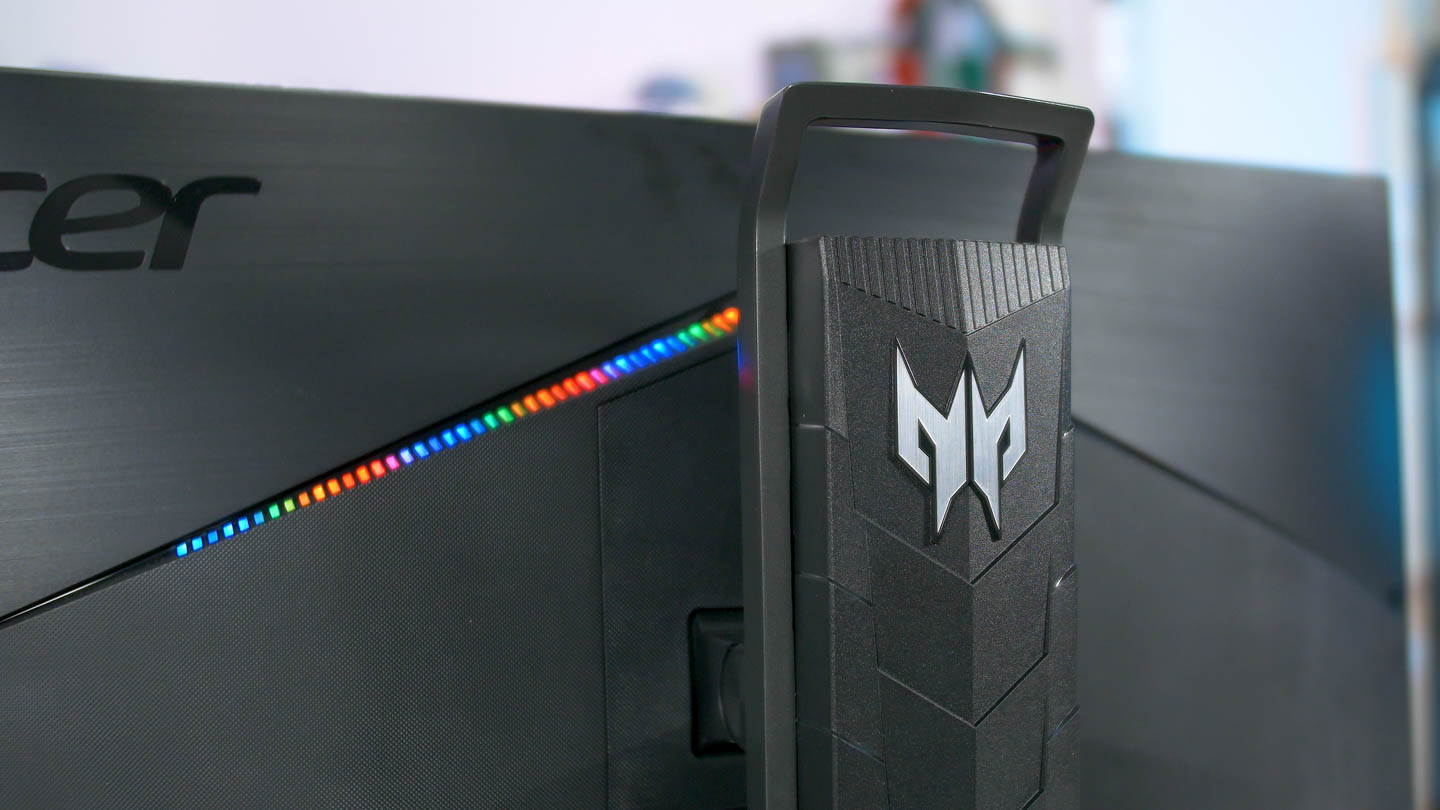A couple of weeks ago you might have spotted our review of the Asus ROG Swift PG27UQ, the first 4K 144 Hz monitor on the market with a DisplayHDR 1000 certification and, of course, G-Sync HDR. It's a very impressive monitor, certainly one of the best you can get, though we didn't exactly give it a full recommendation due to its $2,000 price tag and a few early adopter issues.
Well, the Asus isn't the only such monitor on the market. The new Acer Predator X27 uses the same AU Optronics panel, so they're both equipped with the same specifications, but that doesn't mean they perform the same as I'll discuss a bit later.
In terms of design, it's an easy win to Acer here. The Predator X27 is simply a far more attractive and well built product compared to the PG27UQ, certainly more fitting of its monstrous price tag.
The front of the display itself isn't all that different to the Asus model, with a similar bezel size and similar simple design. But it's the stand where the X27 starts to differentiate itself with a much more elegant and less overtly gamer design.
Up until the pillar, the stand uses a unique and entirely metal construction befitting of a premium display, with ridiculous light projection features or colored highlights. The chunky pillar on the rear, which provides height and swivel adjust along with the usual tilt support, does ruin the elegant design a little bit, however you can't see it from the front which is great.
The rest of the rear looks reasonable though it does fall a bit into the gamer category, however it's not nearly as bad as Asus' ridiculous 'tech' pattern on the PG27UQ, so in comparison the X27 is basically the most beautiful monitor ever created.
The X27 does use plastic everywhere but the legs, featuring two different finishes on the rear, and it does feel a little cheap. The monitor is still a bit of a chunky beast as well, though I suspect that's mostly due to the FALD backlight
There are also two RGB LED strips integrated into the design, one in the V-shaped vent towards the top, and the other along the bottom edge. Certainly a cleaner way to integrate RGB than simply chucking it into a massive logo on the rear, though personally I'd still disable it.
The inputs you're getting are no different to other G-Sync monitors: a single DisplayPort and single HDMI port, plus an audio jack and USB 3.0 hub with a couple of handy quick-access ports on the left side.
The OSD is controlled through a directional toggle which is great to see, and navigating Acer's feature-packed menu is easy and fast. Most of the settings you'll find here relate to color and backlight controls but there are still favorites like cheat crosshairs and dark boost options, though no ultra low motion blur.
The other thing you'll be interested in I'm sure is the active cooling fan. I criticized the Asus PG27UQ for having an audible cooling fan for the G-Sync HDR monitor, and I'm sorry to say, the Acer Predator X27 also requires a fan to cool the internals. However, Acer uses a noticeably different controller for this fan which allows it to vary the fan's speed.
The Asus version of this monitor runs the fan at the same speed all the time, while the Acer model ramps up the fan slowly from idle, which is a more pleasant and gentle way to introduce the noise the monitor creates. The X27 also appears quieter in its SDR mode, while running HDR content fires up the fan to around the same level of noise as the PG27UQ.
That said, the fan is still audible during SDR operation, which can be a bit annoying depending on the ambient noise in your room. Ideally this sort of monitor wouldn't require a fan, and if it did, the fan would be larger, slower and near silent. But as I mentioned in the PG27UQ review, this is one of those issues that comes about with early adopter products.






